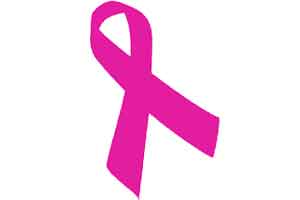- Home
- Medical news & Guidelines
- Anesthesiology
- Cardiology and CTVS
- Critical Care
- Dentistry
- Dermatology
- Diabetes and Endocrinology
- ENT
- Gastroenterology
- Medicine
- Nephrology
- Neurology
- Obstretics-Gynaecology
- Oncology
- Ophthalmology
- Orthopaedics
- Pediatrics-Neonatology
- Psychiatry
- Pulmonology
- Radiology
- Surgery
- Urology
- Laboratory Medicine
- Diet
- Nursing
- Paramedical
- Physiotherapy
- Health news
- Fact Check
- Bone Health Fact Check
- Brain Health Fact Check
- Cancer Related Fact Check
- Child Care Fact Check
- Dental and oral health fact check
- Diabetes and metabolic health fact check
- Diet and Nutrition Fact Check
- Eye and ENT Care Fact Check
- Fitness fact check
- Gut health fact check
- Heart health fact check
- Kidney health fact check
- Medical education fact check
- Men's health fact check
- Respiratory fact check
- Skin and hair care fact check
- Vaccine and Immunization fact check
- Women's health fact check
- AYUSH
- State News
- Andaman and Nicobar Islands
- Andhra Pradesh
- Arunachal Pradesh
- Assam
- Bihar
- Chandigarh
- Chattisgarh
- Dadra and Nagar Haveli
- Daman and Diu
- Delhi
- Goa
- Gujarat
- Haryana
- Himachal Pradesh
- Jammu & Kashmir
- Jharkhand
- Karnataka
- Kerala
- Ladakh
- Lakshadweep
- Madhya Pradesh
- Maharashtra
- Manipur
- Meghalaya
- Mizoram
- Nagaland
- Odisha
- Puducherry
- Punjab
- Rajasthan
- Sikkim
- Tamil Nadu
- Telangana
- Tripura
- Uttar Pradesh
- Uttrakhand
- West Bengal
- Medical Education
- Industry
Junk DNA helps in preventing breast cancer: Study

London: British researchers have identified a piece of non-coding Ribonucleic acid (RNA) that stops cells turning cancerous, reveals a study.
The human genome contains around three metres of DNA, of which only about 2 percent contains genes that code for proteins and the rest has been recorded as RNA -- transcribed from a stretch of DNA that doesn't code for a protein.
"In our study we've identified that a strand of non-coding RNA prevents the growth of a switch getting stuck and suppresses the spread of cancer,” said Adele Murrell from the University of Bath in UK.
The findings could be used to understand how other non-coding RNAs function and to develop potential gene therapies to treat cancer, the researchers said.
The non-coding RNA fragment maintains healthy cells through two mechanisms: Firstly, by regulating the levels of one of its neighbouring genes that is involved in cell replication; secondly by suppressing a network of genes that prepares cells to change their shape and prepare for spread, explained the researchers in the paper published in the journal -- Nature Communications.
The scientists were able to distinguish between these two mechanisms by using smaller interfering RNAs (siRNAs) to either specifically stop the non-coding RNA from being made or to degrade the RNA immediately after it was made.
Both approaches led to cells changing their shape and transforming into migratory cells, the study revealed.
The human genome contains around three metres of DNA, of which only about 2 percent contains genes that code for proteins and the rest has been recorded as RNA -- transcribed from a stretch of DNA that doesn't code for a protein.
"In our study we've identified that a strand of non-coding RNA prevents the growth of a switch getting stuck and suppresses the spread of cancer,” said Adele Murrell from the University of Bath in UK.
The findings could be used to understand how other non-coding RNAs function and to develop potential gene therapies to treat cancer, the researchers said.
The non-coding RNA fragment maintains healthy cells through two mechanisms: Firstly, by regulating the levels of one of its neighbouring genes that is involved in cell replication; secondly by suppressing a network of genes that prepares cells to change their shape and prepare for spread, explained the researchers in the paper published in the journal -- Nature Communications.
The scientists were able to distinguish between these two mechanisms by using smaller interfering RNAs (siRNAs) to either specifically stop the non-coding RNA from being made or to degrade the RNA immediately after it was made.
Both approaches led to cells changing their shape and transforming into migratory cells, the study revealed.
Next Story


